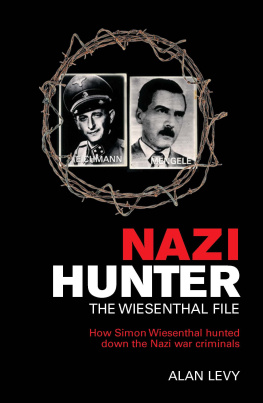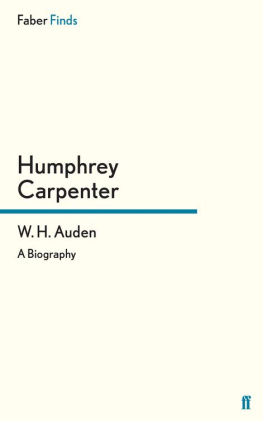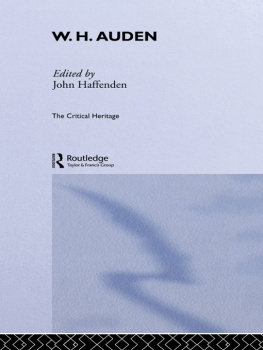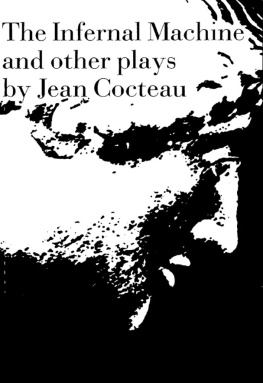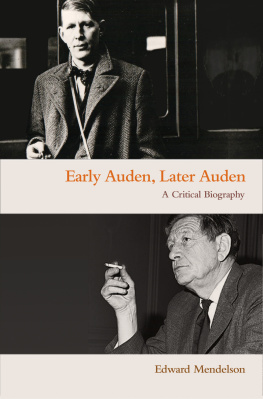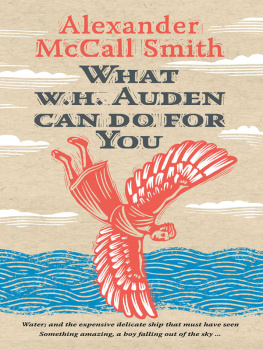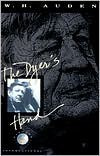Alan Levy - W.H. Auden: In the Autumn of the Age of Anxiety
Here you can read online Alan Levy - W.H. Auden: In the Autumn of the Age of Anxiety full text of the book (entire story) in english for free. Download pdf and epub, get meaning, cover and reviews about this ebook. year: 1983, publisher: Permanent Pr Pub Co, genre: Detective and thriller. Description of the work, (preface) as well as reviews are available. Best literature library LitArk.com created for fans of good reading and offers a wide selection of genres:
Romance novel
Science fiction
Adventure
Detective
Science
History
Home and family
Prose
Art
Politics
Computer
Non-fiction
Religion
Business
Children
Humor
Choose a favorite category and find really read worthwhile books. Enjoy immersion in the world of imagination, feel the emotions of the characters or learn something new for yourself, make an fascinating discovery.
- Book:W.H. Auden: In the Autumn of the Age of Anxiety
- Author:
- Publisher:Permanent Pr Pub Co
- Genre:
- Year:1983
- Rating:4 / 5
- Favourites:Add to favourites
- Your mark:
- 80
- 1
- 2
- 3
- 4
- 5
W.H. Auden: In the Autumn of the Age of Anxiety: summary, description and annotation
We offer to read an annotation, description, summary or preface (depends on what the author of the book "W.H. Auden: In the Autumn of the Age of Anxiety" wrote himself). If you haven't found the necessary information about the book — write in the comments, we will try to find it.
W.H. Auden: In the Autumn of the Age of Anxiety — read online for free the complete book (whole text) full work
Below is the text of the book, divided by pages. System saving the place of the last page read, allows you to conveniently read the book "W.H. Auden: In the Autumn of the Age of Anxiety" online for free, without having to search again every time where you left off. Put a bookmark, and you can go to the page where you finished reading at any time.
Font size:
Interval:
Bookmark:

W. H. Auden
In the Autumn of the Age of Anxiety
Alan Levy
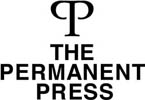
New York
A PREFACE TO THE FIRST THREE PORTRAIT BOOKS
When my profiles-in-depth of W. H. Auden, Vladimir Nabokov, and Ezra Pound first appeared in the New York Times Magazine in the early 1970s, I received many letters and a few transatlantic calls from editors and publishers who all voiced the same regret: that these articles must die the natural deaths of yesterdays paper or last weeks Sunday supplement.
Their solutions, no matter how winningly phrased did not grab mefor I had heard their gists and piths before. Basically, these proposals boiled down to two. The Vertical Approach: Why dont you paste them up, together with some others youve done, and well publish a collection? To which my response was: For whom? The Horizontal Approach: How about expanding this one [or that one] into a definitive biography? The answer came particularly easily in Pounds case: It took me two weeks to get two hundred words of quotes from him, so I dont think Ill live long enough to do a full-length biography. At the time, Pound was eighty-six and I was thirty-nine.
I also recognized that, from each of the three writers, I had drawn all or almost all that personal contact was going to elicit. And yet I wasnt ready to let go of them.
The solution dawned when one editor, Howard Greenfeld, began by reminding me: These are all old men. For one or more of them, this may be the last public appearance before the obituary notices. Howard went on to stress my obligation to students and others who were just starting to discover and read these authors: to put my work, their output, and their lives into some solid, useful order. I realized that, when I had been an undergraduate at Brown University and a graduate student at Columbia, and just starting to read Pound and Auden (Nabokov was still too new then), I certainly would have welcomed an informed introduction to them as living men rather than assigned authors.
Howard Greenfeld being an American editor living in Europe in the next country to mine, he and I were able to continue the discussion over many monthsand out of it has come this small cottage industry of PORTRAIT BOOKS: published for library, critical, gift-giving, student, and general use. These first three areand the Portrait Books to come in future years will beworks of enthusiastic journalistic scholarship researched and written, firsthand, by one man who knew his subjects well and intensely who read everything by them and who likes and cares for what he is writing about. These books have a uniform formatthough the lengths and styles of the components can be as different as Pound is from Auden is from Nabokov.
Part 1: THE MAN. A biographical portrait, drawn from my initial magazine interviews. They are never padded, though sometimes they are fleshed out with material that was omitted or lost to the magazines editorial, puritanical, or space needs. Nor are the magazine profiles drastically reworked, except to fit the needs of each book and bring it up-to-date. All of the first three heroes have died in the interim between article and book, but each first chapter remains a meeting with the living man in the context of his living word.
Part 2: QUOTES. A mosaic of words by and about the man youve just met. This section is organized with an ear to the rhythm as well as the flavor of whatever he has done to merit your attention.
Part 3: An essay on EXPERIENCING him, not just reading him or reading about him. Written conversationally, this is a verbal map, with a few guidelines, for a voyage of discovery in which you share some of What Its Like and How It Feels to be reading Pound or Nabokov or Auden, hearing him on records, and perhaps attending his plays or movies. It is narrated with my own personal insights and affection for the works. I must emphasize that this is NOT a critical essay. At my most waspish, I may warn you off a redundant lesser work or vent my outrage at the kind of critical study that erects barriers of boredom and trivia between you and the artistso I never want to feel guilty of the same crime against literature. And this chapter should be read NOT as a substitute for actually experiencing the artist, but as an appetizer or as a companion to the essential experience.
Part 4: A comprehensive BIBLIOGRAPHY that does what most bibliographies Ive seen dont do: it takes cognizance of paperbacks and hardcover reissues, instead of merely listing all the relevant details of the original 1910 or 1967 edition, now out of print, by a publisher who is now out of business. And it contains Library of Congress catalog listings as well as Dewey decimal shelf numbers. This will tell you where to look in your own librarys alphabetical card file and may even enable you to go directly to the specific shelf where youll find a certain book or related works. In this effort, I was blessed in the 1970s by the heroic labors of Joseph H. Podoski of Washington, D.C., a retired Librarian of Congress and in the 1980s with the assistance of my daughter Monica and my wife Valerie on visits to the Library of Congress.
Part 5: A simple factual CHRONOLOGY of the mans life and career for compact easy reference. For this common-sense suggestion, I am grateful to Prof. Alden Todd (author of Finding Facts Fast), who had the common sense to suggest it.
These books are illustrated with photos by the man I consider the best portrait photographer working in Europe today: Horst Tappe of Montreux, Switzerland. A photographer of rare cultural and personal sensitivity as well as talent, Horst has often been the key who opened the doors to my audiences with great men.
Ezra Pound died in 1972, W. H. Auden in 1973, and Vladimir Nabokov in 1977. All three of them long ago earned their immortality, but it is my hope that these small books of mine will ease the path for your understanding and enjoyment of WHY they will live on.
PORTRAIT BOOKS: The First Trilogy
1. EZRA POUND: The Voice of Silence
2. W. H. AUDEN: In the Autumn of the Age of Anxiety
3. VLADIMIR NABOKOV: The Velvet Butterfly

Dedication:
To the Memories of
C.S.K. and W.H.A.
May The Brothered-Ones, The Not-Alone
live on in the Good Place, the Just City of God.
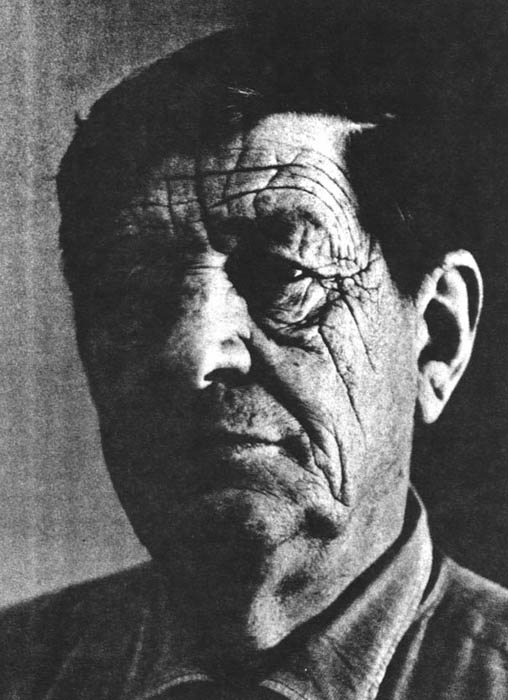
CONTENTS
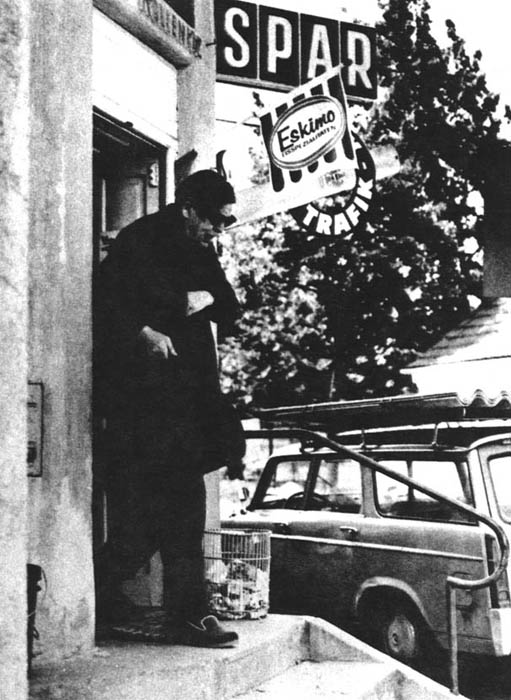
THE MAN: AFTERNOONS ON AUDENSTRASSE
Follow, poet, follow right
To the bottom of the night,
With your unconstraining voice
Still persuade us to rejoice;
Scene 1: | IN KIRCHSTETTEN 1971 |
Kirchstetten is where one might have expected Robert Frost to live on a Guggenheim: an Austrian village of 800 with red-shingled roofs glistening in the cool but benign noonday sun; neat green and brown fields lying fertile and fallow as though ordained by an almanac. The local train from Viennaa rickety, green Third Avenue El retread with iron-gated open platformshews to its schedule, too: precisely 54 minutes from the Wien Westbahnhof to Kirchstetten. Rising from the platforms lone bench, the tall man in the red sport shirt, worn loose and flowing like a body bandana over baggy khakis, checks the trains arrival against his wristwatch and nods approvingly. Then his creased facewhich has been described as grooved and rutted like a relief map of the Balkans and which he himself once said looked as if it had been left out in the rain too longfurrows further while his watery eyes squint and canvass the train to ascertain if the visitor who invited himself down is indeed aboard. Only when the sole disembarking passenger in city clothes marches directly toward him does the face re-fold itself into a smile and W. H. Auden rises to extend a brisk handshake of welcome.
Font size:
Interval:
Bookmark:
Similar books «W.H. Auden: In the Autumn of the Age of Anxiety»
Look at similar books to W.H. Auden: In the Autumn of the Age of Anxiety. We have selected literature similar in name and meaning in the hope of providing readers with more options to find new, interesting, not yet read works.
Discussion, reviews of the book W.H. Auden: In the Autumn of the Age of Anxiety and just readers' own opinions. Leave your comments, write what you think about the work, its meaning or the main characters. Specify what exactly you liked and what you didn't like, and why you think so.


